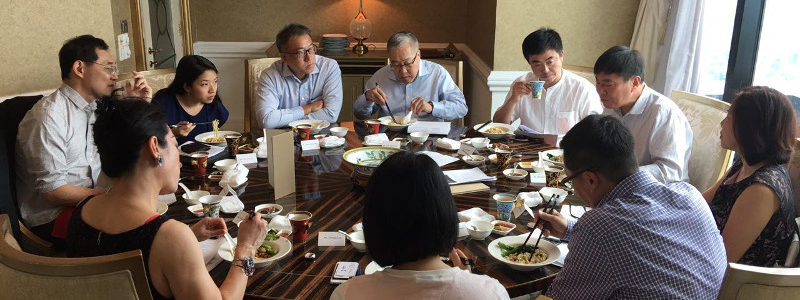by Tan Yu Ann
APC hosted our first roundtable in Singapore on philanthropy in China on the 18 May 2017. Members and guests gathered to explore the fragmented Chinese philanthropy environment and the host of challenges that donors and non-profit organisations face.
Philanthropy has become not only a social imperative but also an opportunity to bring private sector expertise and new perspectives into development. This opportunity for engagement certainly has not gone unnoticed by philanthropists and China’s philanthropic landscape is rapidly evolving. But this evolution in the sector has also attracted government scrutiny and will continue to attract more. Members and guests expressed concerns about existing charity laws and other outdated regulations that govern the non-profit sector, which combined with the lack of transparency, continue to pose serious challenges to the development of philanthropy in China.
Strong government influence also creates a unique situation where they become a critical ally in advancing organisations’ goals and strategies while also creating a redundancy in what would be more traditional philanthropic focuses. One Chinese philanthropist shared the success of what initially started out as a small vaccination pilot for children in Qing Hai and is now a free vaccination drive for children aged 0-18 years of age after the government adopted the programme. With the Chinese government pumping so many resources into the development of infrastructure, the group agreed that it would be unwise for philanthropists to invest in traditional areas like school building. Rather, there seems to be a greater need to develop soft skills through skills-based training, business and entrepreneurship training and increased access to resources.
Our members and guests alike shared a common challenge of complexity and opacity of the non-profit sector in China. With the structure and regulatory environment governing the sector being vastly different from the West (where many philanthropists in China have ironically been looking to for guidance and ideas), it is perplexing for foreign organisations and donors to navigate. A shared sentiment that was aired during the roundtable was the need to develop an ‘Asian’ brand of philanthropy that is more relevant to the region. Another Chinese philanthropist suggested that a knowledge and values exchange platform be created with Singapore’s many family foundations taking a lead role.
In the last few years, technology and social media have created innovative ways to donate. Participants agreed on how a platform like WeChat makes it easier for the general public to participate in philanthropy and how it creates a more robust giving environment. All this while also hopefully injecting some much needed creativity and innovation into alleviating protracted issues.
In many respects, China is still a place where philanthropists are finding it hard to build, promote, and sustain charitable causes but with the right understanding and strategy, opportunities for impactful social change are numerous. We look forward to continuing this discussion and exploring how philanthropy in China develops.

